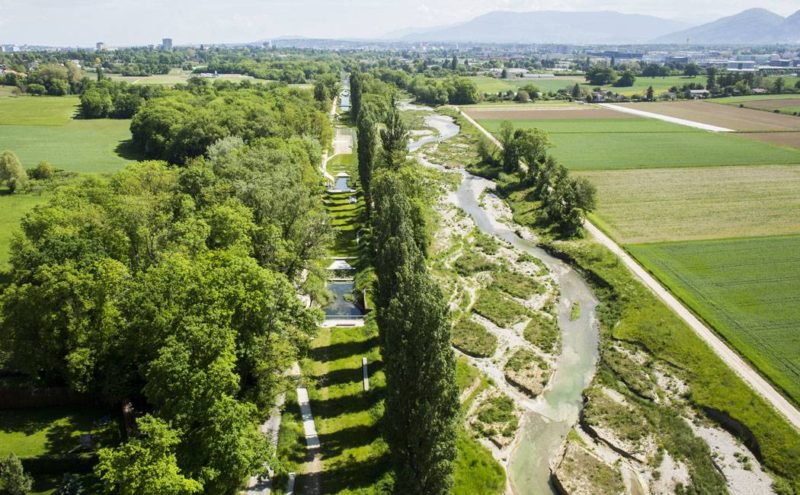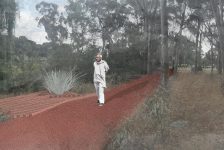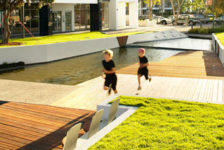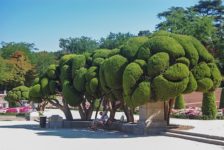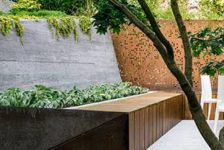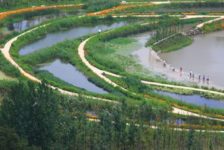Article by Nour Adel – Renaturation of the river Aire, by Georges Descombes and Atelier Descombes & Rampini, in Geneva, Switzerland. Designing river gardens and natural scenery is a unique aspect of our profession as landscape architects, because it allows us to not only focus on hardscaping and landscaping specs, but also to deal with an intriguing ecological dimension in which there is an an opposition between nature and culture. This challenging renovation project in Geneva attempts to propose an alternate path, in which the urgent ecological shifts are incorporated into a larger cultural change. The complex organization of the design associates the new river space and a linear series of gardens in the former canal. It is a great example to analyze in order to understand what to consider when designing river gardens or any refurbishment project that deals with water elements and existing natural scenery.

Renaturation of the river Aire. Photo credit: Jacques Bethet
Renaturation of the River Aire
Ecological Shift
“The activist is not the man who says the river is dirty. The activist is the man who cleans up the river. ” –– Ross Perot, American businessman and independent presidential candidate in 1992. The main approach for the renovation project was an ecological one. In front of the watershed — the area of land that separates waters flowing to different rivers — this long river garden organizes the area’s views, aiming at attracting attention to this fragile and precious territory.
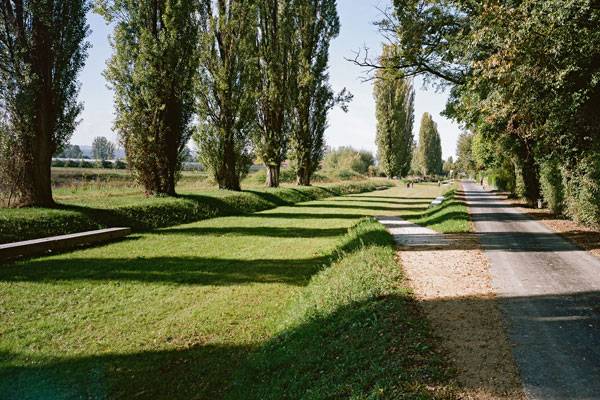
Renaturation of the river Aire. Photo credit: Jacques Bethet
The project’s main goal was to present a true “restoration” of the whole region, since rebuilt landscaped devices — ditches, hedges, and thickets – had almost entirely disappeared, but remained readable on historical documents. Action was taken to bring them back to life.

Photo courtesy of Atelier Descombes & Rampini
In the perimeter reserved for natural environments (a strip of about 80 meters along the canal), open lands that were once intensively cultivated have been replaced with diverse backgrounds for the creation of a remarkable ecological corridor that promotes the networking of habitats and displacement of small animals. These ecological corridors are connections across the landscape that link up areas of habitat. They support natural processes that occur in a healthy environment, including the movement of species to find resources such as food and water.

Photo credit: Jacques Bethet
Ecological corridors can contribute to the resilience of the landscape in a changing climate and help to reduce future greenhouse gas emissions by storing carbon in native vegetation. They can also support multiple land uses, such as conservation, farming, and forestry. The idea is to balance between making it a beautiful natural scenery for people to witness and enjoy, while preserving the area’s authenticity and maintaining a healthy life for the its little wildlife inhabitants. The footprint of the canal is a key aspect for providing the necessary atmosphere of calmness and interiority, without which there is no real garden. It is a permanent trace that introduces a complex integration between past and future.

Photo credit: Jacques Bethet
The result is an organized sequence of differentiated places and paths that allow a reasonable distribution of people and movement. In an effort to contribute to the restoration of natural landscape values, the safety of property and people is one of the main aspects of the project for managing flooding. It helps to strengthen security by management measures and water storage procedures that utilize the river to serve the community.

Photo courtesy of Atelier Descombes & Rampini
Located in a pivotal spot in the city of Geneva, the river gives a unique spatial definition to the area. Such a space is very challenging to be re-designed. For the drawing of the river itself – conscious of the useless effort to design a fixed riverbed and aware that a river usually loves to design itself freely – the designers of Georges Descombes instead proposed a pattern whose form addresses the play between the river flow and the prepared terrain. Accordingly, the spontaneity and freedom of the river’s nature is still preserved.

Photo courtesy of Atelier Descombes & Rampini

Photo credit: Fabio Chironi.
This diamond-shaped pattern opens a complex series of undetermined channels for water flow. These channels were excavated along the entire new river by removing the humus layer, consisting mainly of remnants of plants and animals, thus maintaining a precise control of the longitudinal nature of the river.

Photo courtesy of Atelier Descombes & Rampini
The dimensions of these special diamond-shaped islands were configured to be able to accept the general sizes of the former curves. The result is spectacular and suggests the tool of most landscape artists — integrating artificial interventions into a natural situation, which is afterward left to the mercy of natural forces. One year after the opening of the new river space, the results are beyond our expectations. The river flows, displacing diverse materials, gravel, and sand. The geometrical matrix of interlacing diamonds is significantly modified. Surprisingly, the more defined the grid given to the river, the more the river will be free to design.
This project enables us to see the importance of ecological/wildlife corridors to the environment. Could this design approach be setting a new standard for upcoming renovations?
CLICK TO COMMENT

Photo courtesy of Atelier Descombes & Rampini
Full Project Credits For Into the Renaturation of the River Aire:
Project: Renaturation of the river Aire, Geneva Client: République et Canton de Genève (State of Geneva) Architecture: Group Superpositions Architects: Georges Descombes and Atelier Descombes & Rampini Engineers: B+C Ingénieurs ZS Ingénieurs civils Biology: Biotec SA Chronology: Phase 1: 2002 – 2006, Phase 2: 2009 – 2011, Phase 3: 2012 – 2015, Phase 4: Ongoing Costs: Phase 1: 1’500’000 Fr., Phase 2: 25’000’000 Fr., Phase 3: 33’000’000 Fr. Length: 5km Surface: 50 Ha Recommended Reading:
Article by Nour Adel
Published in Blog











